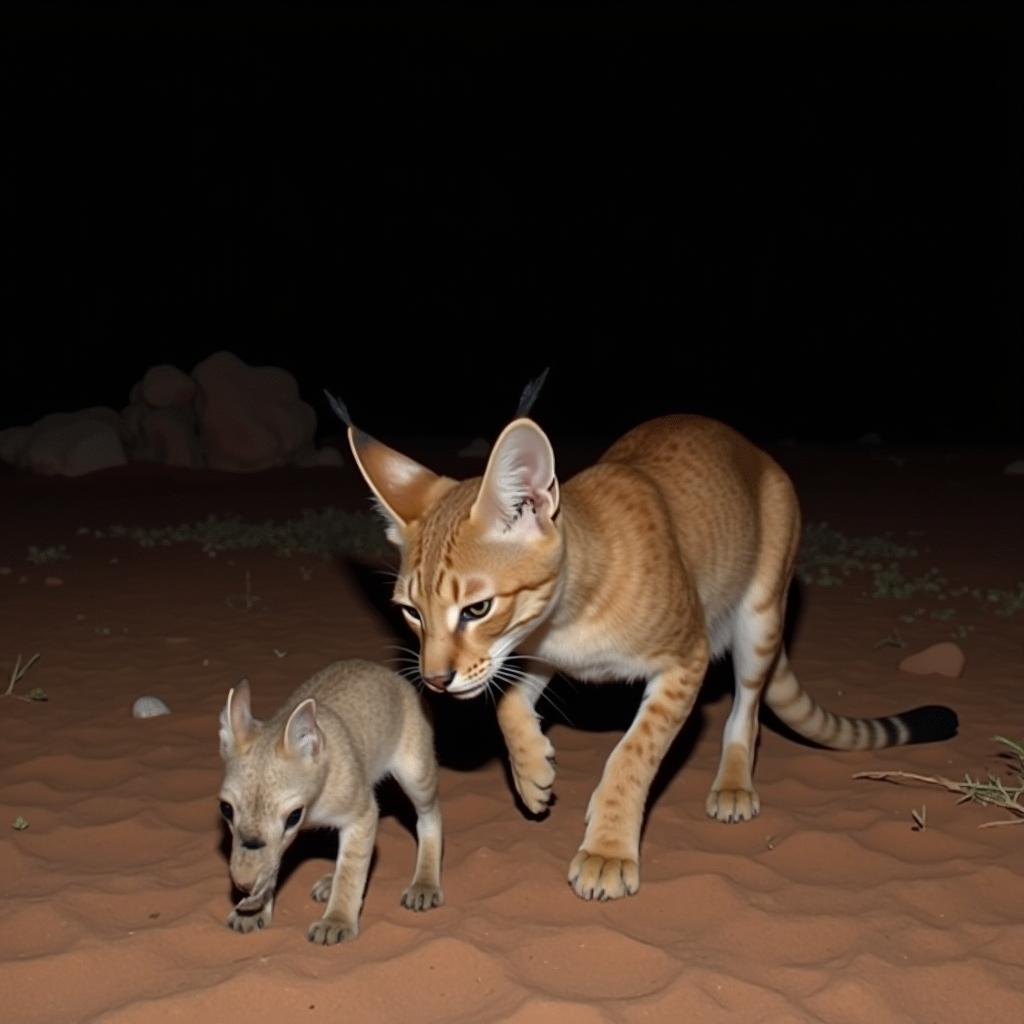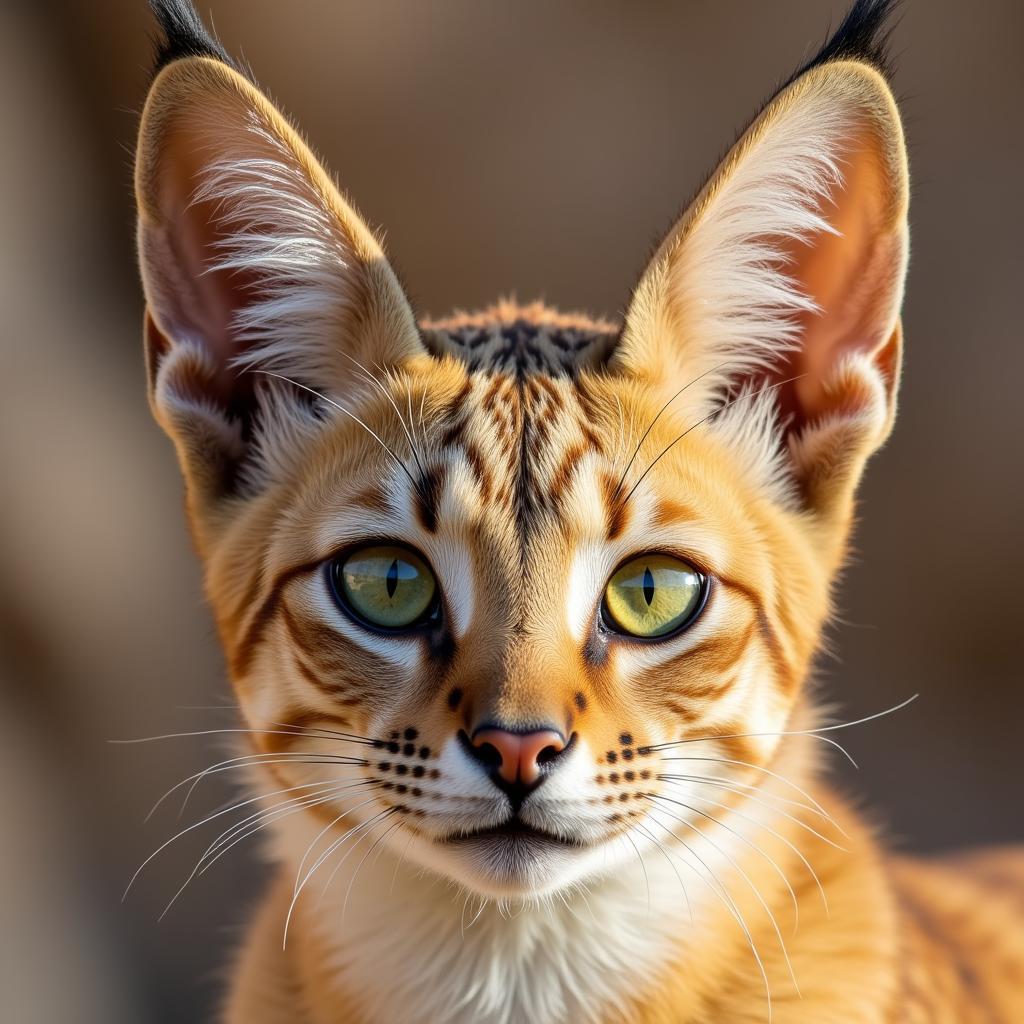Unveiling the Secrets of the African Desert Cat
The African Desert Cat, a fascinating feline inhabiting the harsh landscapes of North Africa, remains shrouded in mystery. These elusive creatures, perfectly adapted to survive in arid environments, are a testament to the resilience of life in the face of adversity. Learn more about their unique characteristics, behaviors, and the challenges they face in a changing world. Let’s delve into the intriguing life of the African desert cat.
The African desert cat, also known as Felis silvestris lybica, is often mistaken for a domestic cat due to its similar appearance. However, a closer look reveals distinct features that set it apart. These include slightly longer legs, a leaner build, and a sand-colored coat that provides excellent camouflage in their desert habitat. Their large ears not only enhance their hearing but also help dissipate heat in scorching temperatures. These adaptations allow them to thrive in environments where few other mammals can survive. You can find these incredible creatures in the vast Sahara Desert, stretching across countries like Algeria, Morocco, and Egypt, as well as parts of the Arabian Peninsula.
The African Desert Cat: Master of Survival
Living in the desert requires remarkable adaptations, and the African desert cat has mastered the art of survival. They are primarily nocturnal hunters, taking advantage of the cooler night temperatures to stalk their prey. Their diet consists mainly of rodents, insects, reptiles, and birds. They have even been observed catching venomous snakes, demonstrating their impressive hunting prowess. Water is scarce in the desert, but the African desert cat obtains most of its hydration from the fluids in its prey, reducing its reliance on external water sources.
 African Desert Cat Hunting at Night
African Desert Cat Hunting at Night
Understanding the Desert Cat’s Behavior
Despite their solitary nature, African desert cats exhibit complex social behaviors. They maintain territories, which they mark with scent, and will defend them against intruders. During mating season, males and females will come together to breed, and the female will raise the kittens alone. The kittens learn essential survival skills from their mother, including hunting techniques and how to navigate the challenging desert terrain.
 African Desert Cat Mother and Kittens
African Desert Cat Mother and Kittens
Threats and Conservation Efforts for the African Desert Cat
The African desert cat faces several threats to its survival, including habitat loss due to human encroachment and climate change. They are also sometimes hunted for their fur or killed by farmers who mistakenly believe they are a threat to livestock. Conservation efforts are underway to protect these elusive felines and their fragile desert ecosystem. These initiatives include monitoring populations, protecting habitats, and educating local communities about the importance of conserving this unique species.
What Does the African Desert Cat Look Like?
The African desert cat is a small to medium-sized wildcat, with a sandy or yellowish-grey coat. It has faint stripes on its legs and tail, and a black-tipped tail. It’s quite similar in appearance to a domestic tabby cat, although slightly smaller and more slender.
 African Desert Cat Close-Up
African Desert Cat Close-Up
Conclusion: Protecting the Desert Dweller
The African desert cat, a remarkable creature of the Sahara, continues to captivate our imagination. By understanding their unique adaptations and the threats they face, we can work towards ensuring their continued survival in their challenging desert home. Let’s continue to learn and support conservation efforts for the African desert cat, a true symbol of resilience and adaptation in the African wilderness. Did you know there are other fascinating African animals, such as those found in the 5 African Animals article? It’s an interesting read. You might also be surprised to learn about the African adivasi life and their connection to the land.
FAQ
- What is the scientific name of the African desert cat? Felis silvestris lybica
- What does the African desert cat eat? Rodents, insects, reptiles, and birds.
- Where does the African desert cat live? North Africa, primarily the Sahara Desert, and parts of the Arabian Peninsula.
- Is the African desert cat endangered? While not currently classified as endangered, they face several threats to their survival.
- What are the main threats to the African desert cat? Habitat loss, human encroachment, and climate change.
- Are there any conservation efforts to protect the African desert cat? Yes, initiatives include monitoring populations, protecting habitats, and educating local communities.
- How do African desert cats survive in the desert? Their nocturnal habits, specialized diet, and ability to obtain water from their prey are key to their survival.
For more information on African geography, you can check out the alphabetical list of African countries and African countries in toorid zone. You may also find the African hot jungel movie an interesting resource, albeit unrelated to desert cats.
Common Situations and Questions
- What to do if you encounter an African Desert Cat in the wild? Observe from a safe distance and do not approach or attempt to interact with the animal.
- How can I support African Desert Cat conservation? Donate to reputable organizations working to protect the species and their habitat.
Further Exploration
- Explore the cultural richness of different African communities.
- Learn more about the diverse ecosystems across the African continent.
When you need support, please contact us: Phone: +255768904061, Email: [email protected] Or visit us at: Mbarali DC Mawindi, Kangaga, Tanzania. We have a 24/7 customer support team.



